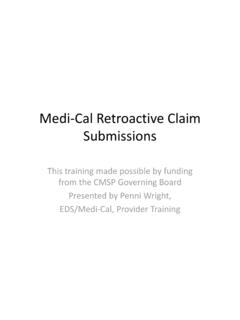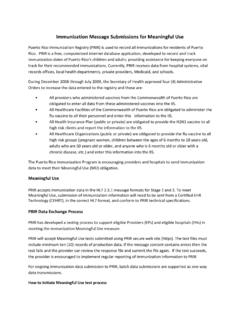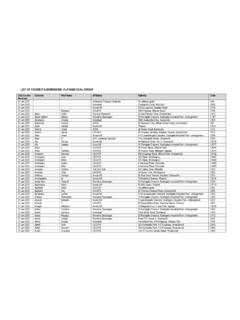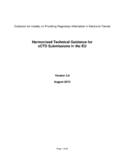Transcription of Diseases of Poverty - WHO
1 Diseases of Poverty and the 10/90 gap Diseases of Poverty and the 10/90 Gap Diseases of Poverty and the 10/90 Gap Written by Philip Stevens, Director of Health Projects, International Policy Network November 2004. International Policy Network Third Floor, Bedford Chambers The Piazza London WC2E 8HA UK. t : +4420 7836 0750. f: +4420 7836 0756. e: w : International Policy Network 2004. Designed and typeset in Latin 725 by MacGuru Ltd Cover design by Sarah Hyndman Printed in Great Britain by Hanway Print Centre 102 106 Essex Road Islington N1 8LU.
2 All rights reserved. Without limiting the rights under copyright reserved above, no part of this publication may be reproduced, stored or introduced into a retrieval system, or transmitted, in any form or by any means (electronic, mechanical, photocopying, recording or otherwise) without the prior written permission of both the copyright owner and the publisher of this book. Diseases of Poverty and the 10/90 Gap Introduction: What is the 10/90 Gap? Figure 1 Number of daily deaths from diseases7. Activists claim that only 10 per cent of global health research is devoted to conditions that account for 90.
3 Respiratory 10,814. per cent of the global disease burden the so-called infections 10/90 Gap'.1 They argue that virtually all Diseases HIV/ 7,852. AIDS. prevalent in low income countries are neglected' Diarrhoeal 5,482. and that the pharmaceutical industry has invested Diseases almost nothing in research and development (R&D) Tuberculosis 4,504. for these Diseases . Childhood 3,611. Diseases Citing this alleged imbalance as justification, 3,079. Malaria activists have been calling for a complete redesign of Neglected 378. the current R&D paradigm in order to ensure that Diseases *.
4 More attention is paid to these neglected Diseases '.2 0 2,000 4,000 6,000 8,000 10,000 12,000. This could include measures such as an essential *Neglected Diseases are defined as African trypanosomiasis, Chagas disease research obligation' that would require companies to and leishmaniasis reinvest a percentage of pharmaceutical sales into R&D for neglected Diseases , either directly or revealed that of the 20 global pharmaceutical through public R&D companies surveyed, only two had research projects But does such an imbalance really exist and what underway for the neglected' Diseases of Chagas and would be the effect of redesigning the R&D system?
5 This paper investigates the realities of the 10/90 gap and its relation to the Diseases of Poverty . Neglected Diseases are a tiny fraction of total mortality Neglected Diseases However, these bare statistics serve to mislead Many scholars and activists have suggested that the people into thinking that the poor are suffering at pharmaceutical industry is failing to devote the expense of the rich. The reality is that sufficient R&D effort towards finding effective cures neglected' Diseases often do not represent the most and treatments for tropical infectious Diseases such pressing public health priorities in low income as leishmaniasis, lymphatic filariasis, Chagas' countries.
6 They constitute a small fraction of their disease , leprosy, Guinea worm, onchocerciasis and total disease burden (Figure 1). According to the schistosomiasis. These so-called neglected' Diseases 2002 World Health Organisation's (WHO) World predominantly effect poor populations in low Health Report, tropical Diseases accounted for only income countries,4 and pose particular social and per cent of deaths in high-mortality poor economic problems for those affected. countries, and only per cent of deaths in low- mortality poor countries. Patrick Trouiller, for example, has pointed out that of the 1,393 total new drugs approved between 1975 Moreover, treatments already exist for many of these and 1999, only 1 per cent (13 drugs) were Diseases .
7 Schistostomiasis (bilharzia), which specifically indicated for a tropical predominantly affects children in Africa, can be Research conducted by the DND Working Group and treated with praziquantel at a cost of 30 cents per the Harvard School of Public Health in 2001 child per year. Onchocerciasis (river blindness) is 3. Diseases of Poverty and the 10/90 Gap controllable with ivermectin. A range of treatments nutrition, and can be treated with DOTS therapy. exist for lymphatic filariasis (elephantiasis). The This can detect and cure disease in up to 95 per only significant tropical disease for which there is no cent of infectious patients, even in the poorest existing medicine is dengue fever, but even for this disease there are five compounds currently at the Education is vital for the prevention of state of discovery and preclinical development, a HIV/AIDS and this entails the full engagement further two in Phase 1 trials and one more in Phase of civil society.
8 A combination of anti-retrovirals 2 In fact, the WHO acknowledges that there (ARVs) and good nutrition can help to control are only three Diseases that are genuinely the viral load and suppress the symptoms of neglected': African trypanosomiasis, leishmaniasis HIV/AIDS. and Chagas Treatable childhood Diseases such as polio, measles and pertussis, account for only per Most disease in lower-income cent of Disability Adjusted Life Years (DALYs) in countries is caused by Poverty high-income countries, while they account for A large proportion of illnesses in low-income per cent of DALYs in high mortality low- countries are entirely avoidable or treatable with income Vaccines for these Diseases existing medicines or interventions.
9 Most of the have existed for at least 50 years, yet only 53 per disease burden in low-income countries finds its cent of children in sub-Saharan Africa were roots in the consequences of Poverty , such as poor immunised with the diphtheria-tetanus- nutrition, indoor air pollution and lack of access to pertussis (DTP) jab in proper sanitation and health education. The WHO. Diarrhoeal Diseases are caused by the poor estimates that Diseases associated with Poverty sanitation inherent to the condition of Poverty , account for 45 per cent of the disease burden in the yet are easily and cheaply treatable through oral poorest However, nearly all of these rehydration therapy.
10 However, diarrhoeal deaths are either treatable with existing medicines Diseases still claim million lives each year. 15. or preventable in the first place. Respiratory infections caused by burning Tuberculosis, malaria and HIV/AIDS, for biomass fuels in poorly ventilated areas also example, together account for nearly 18 per cent place a considerable health burden on poor of the disease burden in the poorest people. According to the WHO, exposure to Malaria can be prevented through a combination biomass smoke increases the risk of acute lower of spraying dwellings with DDT, using respiratory infections (ALRI) in childhood, insecticide treated mosquito nets and taking particularly pneumonia.















